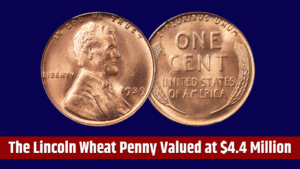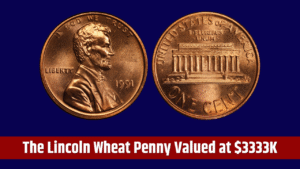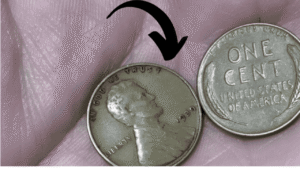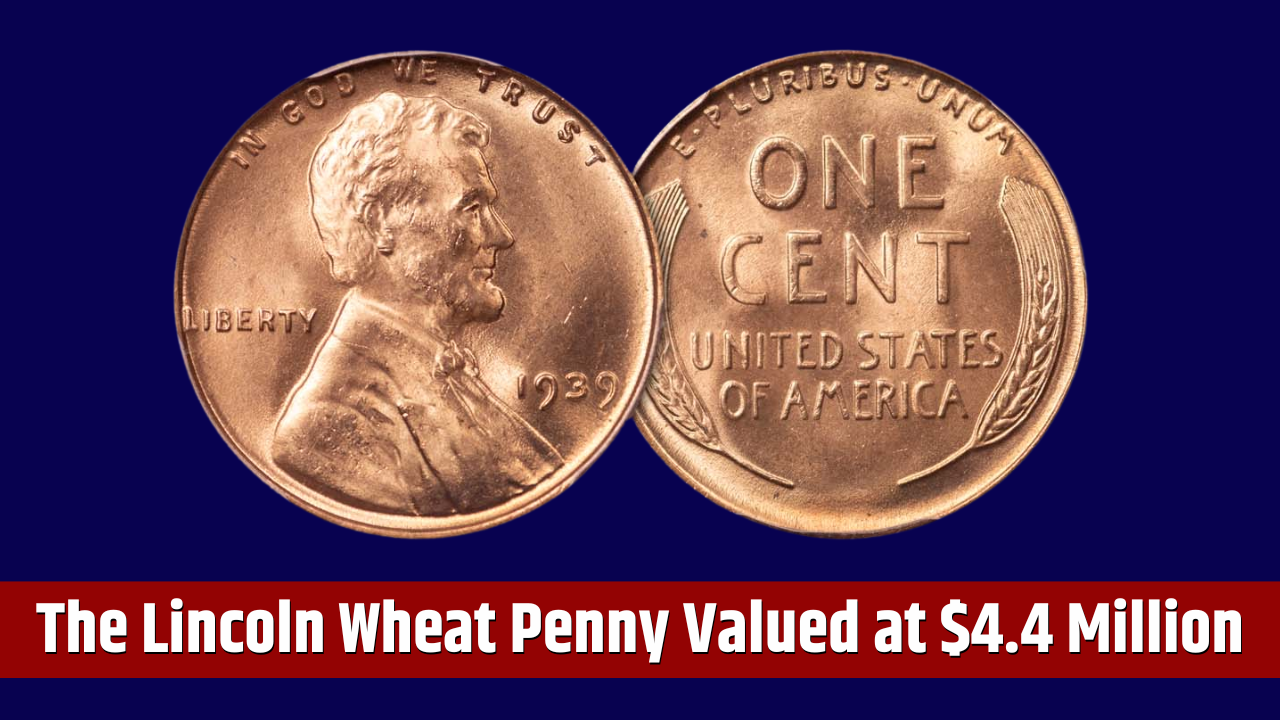Imagine finding a simple penny that could turn you into a millionaire. While it sounds like a dream, it’s a real possibility, thanks to one of the rarest coins in American history — the 1943 Lincoln Wheat Penny, now valued at an astounding $1,000,000. Even more thrilling, experts believe a few of these rare coins may still be circulating today.
For coin collectors and everyday people alike, this story fuels excitement — a tiny copper treasure could be hiding in your spare change jar, quietly waiting to change someone’s life.
The Story Behind the Lincoln Wheat Penny
The U.S. Mint produced the Lincoln Wheat Penny from 1909 to 1958, featuring President Abraham Lincoln on the front and two wheat stalks on the back. While most of these coins are common and worth only face value, a handful have become legends in the numismatic world due to rare minting mistakes and historical quirks.
During World War II, copper was urgently needed for wartime production. As a result, the Mint shifted to using zinc-coated steel for pennies in 1943. However, a few leftover copper planchets from 1942 were mistakenly used, creating the extremely rare 1943 bronze Lincoln Wheat Penny.
Why the 1943 Bronze Wheat Penny Is So Valuable
The rarity of the 1943 bronze penny drives its incredible value. Only a few are known to exist, and each one can command a massive price at auction. One Philadelphia-minted 1943 bronze penny, in pristine condition, has been valued at $1 million.
Pennies from the Denver (“D”) and San Francisco (“S”) mints are also highly sought after and command premium prices. Given their scarcity, finding one could be the discovery of a lifetime.
Quick Guide to Identifying a 1943 Bronze Penny
If you think you might have one of these rare pennies, here’s what to check:
| Feature | What to Look For |
|---|---|
| Year | The date must read 1943. |
| Color | Bronze pennies are brown or copper-colored; steel ones appear silver-gray. |
| Magnet Test | Steel pennies stick to magnets; bronze pennies do not. |
| Weight | Bronze pennies weigh around 3.11 grams; steel pennies weigh about 2.7 grams. |
| Mint Mark | Look under the date for no mark (Philadelphia), a “D” (Denver), or an “S” (San Francisco). All are valuable. |
If your penny meets these conditions, you should have it professionally authenticated by a service like PCGS (Professional Coin Grading Service) or NGC (Numismatic Guaranty Company).
Could Rare 1943 Pennies Still Be Found Today?
Surprisingly, yes. Some 1943 bronze Lincoln Wheat Pennies were found decades after being minted — tucked away in old jars, hidden in coin rolls, or passed along in everyday transactions. Experts believe a few examples are still unaccounted for, making the search all the more exciting.
How to Sell Rare Lincoln Wheat Pennies and Other Valuable Coins
If you believe you have a rare Lincoln penny or any collectible coin, here’s the best approach:
- Get a Professional Appraisal: Use reputable services like PCGS or NGC to confirm authenticity.
- Avoid Quick Cash Offers: Be cautious if someone offers you a low price without proper evaluation.
- Use Trusted Auction Houses: Major auctions often yield the best prices for rare coins.
- Research Market Trends: Stay informed about coin values to avoid being undersold.
For more resources, reputable coin shows and professional grading services can help connect you with trusted buyers.
Finding a rare Lincoln Wheat Penny is more than a financial win — it’s a connection to American history. The story of the 1943 bronze penny is a reminder that extraordinary treasures sometimes hide in the most ordinary places. As long as coins continue to pass through our hands, there remains a chance that one lucky person will discover a $1 million penny hiding in plain sight.
FAQs
Why is the 1943 Lincoln Wheat Penny so valuable?
Because it was mistakenly minted in bronze instead of steel during World War II, making it extremely rare.
How can I tell if my 1943 penny is bronze?
Check the color (brown/copper), test with a magnet (bronze won’t stick), and weigh it (bronze weighs about 3.11 grams).
Is it possible rare pennies are still in circulation?
Yes, experts believe a few may still be hidden in coin jars, rolls, or collections.
What mint marks should I look for?
A 1943 bronze penny can have no mint mark (Philadelphia) or feature a “D” (Denver) or “S” (San Francisco).
Where should I get my coin authenticated?
Reputable services like PCGS or NGC are recommended for authentication and grading.










